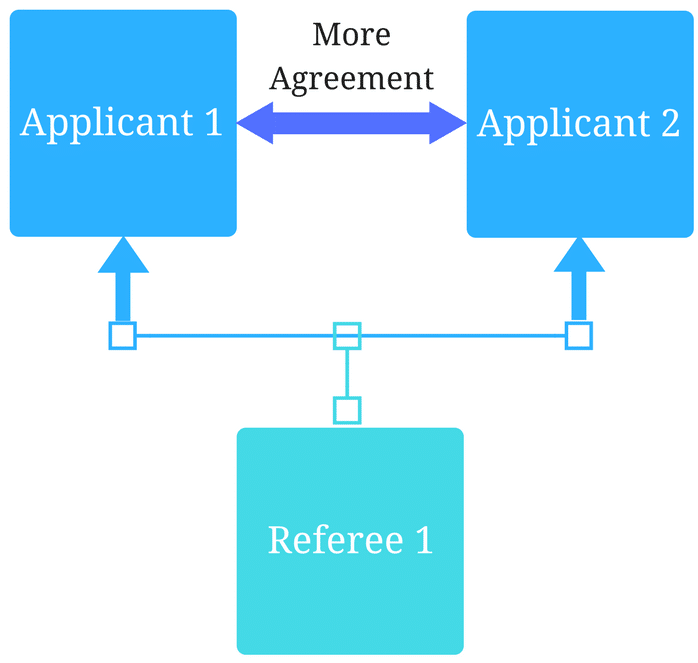Analyzing and improving residency match rates

March 7, 2022
How schools are innovating to ensure successful student outcomes
March Madness and The Match. The arrival of spring reads like the title to a great novel and heralds the culminating events for hard work invested over the academic cycle. It also means it’s time to analyze results. Copying and pasting data into Excel and building elaborate pivot tables is, for many medical schools, a sure sign that spring is in the air.
Match rate – a critical KPI
The Match, which places medical students into residency training programs, provides data points that are key indicators for a medical school’s overall performance. Optimizing the rate at which your school’s students match into their chosen residency specialty is a critical success factor for your students and a key measure of your program’s success.
And yet for a KPI as critical as this, the reporting and analysis work is typically performed through error-prone and time-intensive manual manipulation of data in spreadsheets. We’ve interviewed medical schools across the US and found one common theme – insights from match data are limited and hard to get in its current format.
One school we interviewed described the cut and paste process they go through to pull this information together into Excel. While they are careful, this process is obviously time consuming and open to errors. They find their ability to identify patterns that provide insights limited and experience challenges keeping the data current. Another school we spoke with tracks metrics on the number of matches per cohort for students matched in state as well as to Top 50 schools. To achieve this, they also must pull the available data into Excel but then find it challenging to effectively calculate these KPIs and then maintain the file on an on-going basis. These two schools are both frustrated by the process and the results from the effort. In contrast, however, other schools that we’ve interviewed have just “given up” on trying due to the complexity.
Unified data, better insights
While annual, aggregate level match data is available from the NRMP, the medical schools we’ve interviewed have indicated that they would like to be able to use this data in context with their other data to help answer questions like:
- What is the overall match rate of my institution?
- How well did our students match with their desired residency programs?
- How many of my past students matched to a top program?
- What were the characteristics of the students that matched into certain programs?
- How likely is it that future students will match into their desired programs based on the historic data?
Readily available answers to these questions and accompanying insights from the data enable Student Affairs to provide students with guidance on:
- Likelihood of them matching into their chosen specialty
- Which specialties they should consider given their characteristics
- What additional activities or work they may wish to take on to match into their specialty of choice
We have recently added a feature to Acuity Analytics that enables schools to standardize imports of match data into Acuity Analytics, bringing this data alongside other academic performance measures in the data warehouse to give institutions further insights into their learners from application to graduation.
The addition of residency match data into Acuity Analytics will help Student Affairs teams to guide future students through the residency application process. With easy access to a complete data set on student performance and historical match data combined with powerful segmentation and reporting capabilities, advisors can examine trends and key performance indicators from previous cohorts and use these insights to advise current learners on which specialties they hold the best probability to successfully match in.
Optimizing outcomes from MSPE to Match
With a focussed list of high probability matches, schools can then focus on optimizing each learner’s residency application.
The Acuity MSPE Builder has automated the process of creating letter drafts by pulling all relevant data from multiple data sources into your school’s letter template. Various data sources are integrated into a data warehouse which is updated on a daily basis as new grades and narratives come in. The MSPE Builder polls the data warehouse regularly, providing your administrative teams peace of mind that letter drafts always include the most current, complete and accurate information available. With the automation of the base standard for MSPE letters and armed with historical match data insights, programs now have more time and information available to work on the parts of the letters that will ensure student success.
Through the work we’ve done with schools across the country to examine the challenges and opportunities in the residency match process, the path to match rate optimization and providing the best possible outcomes for learners is now readily accessible.
Curious about making your residency match data work for you? Request a demo with our team to learn more.
Related Articles

How interviews could be misleading your admissions...
Most schools consider the interview an important portion of their admissions process, hence a considerable…
Reference letters in academic admissions: useful o...
Because of the lack of innovation, there are often few opportunities to examine current legacy…
